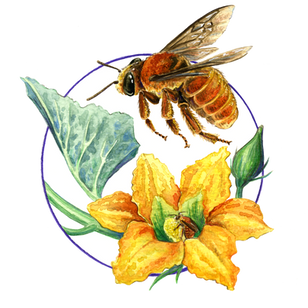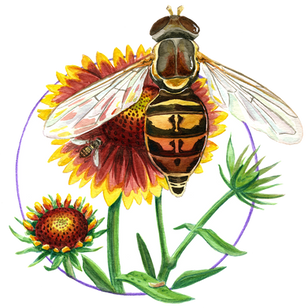
COLORADO NATIVE POLLINATING
INSECTS HEALTH STUDY
Learn more about Colorado insects on this interactive map. Roll over or click on the insects to learn more and also view the Pollinator Study and the state bill that made it possible.
Insects, often underestimated, play a remarkable role in our state's landscapes. Not only are they cool, but they are also vital contributors to essential ecosystem services. From pollination to waste decomposition, insects support Colorado's diverse landscapes, from the mountains to the rivers. Join us as we delve into the world of this fascinating wildlife and learn about the Colorado Native Pollinating Insects Study (2024) report!

Rollover the insects above to learn about them

Colorado Native Pollinating Insects Health Study Top 5 State Priorities:
-
Protect Imperiled Native Pollinating Insects
-
Protect, Restore, and Connect Pollinator Habitats
-
Mitigate Environmental Changes that Negatively Impact Pollinators and their Habitats
-
Reduce the Risks from Pesticides to Pollinating Insects
-
Monitor and Support Native & Managed Pollinator Health
Colorado Native Pollinating Insects Health Study Leads:



In 2022, People & Pollinators Action Network (PPAN) championed CO Senate Bill 22-199 at the legislature, in which the CO Department of Natural Resources commissioned a study on our state's native pollinating insects.
Colorado Native Pollinating Insects
Health Study Outcomes
-
2025: Invertebrates & Rare Plants included and prioritized in Colorado's new State Wildlife Action Plan (SWAP)
-
2025: Creation of Colorado Parks & Wildlife Invertebrate and Rare Plant Program, including 6 new CPW positions
-
2024: Invertebrates & Rare Plants Bill (championed by PPAN) recognizes invertebrates as wildlife in Colorado and mandates their inclusion of species to be studied and protected

COLORADO STATE WILDLIFE ACTION PLAN (SWAP) SPOTLIGHT
Colorado's new State Wildlife Action Plan (SWAP) includes more invertebrates and rare plants than any other taxonomic group!
This is due to Colorado House Bill 24-1117, the Invertebrates & Rare Plants Bill (championed by PPAN), which recognized invertebrates as wildlife in Colorado. This officially gave CPW the authority to mandate and study invertebrates.
INSECTS INCLUDED IN THE SWAP AS SPECIES OF GREATEST CONSERVATION NEED (SGCN)













































